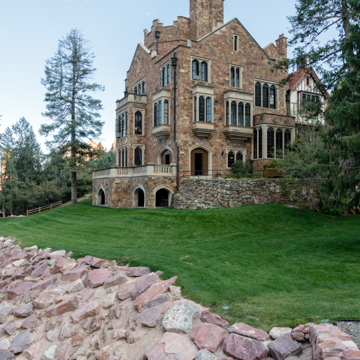William Palmer began building his estate in the 1870s on 2,225 acres at the mouth of Queen's Canyon, which he named for his wife, Queen Mellen Palmer. Originally a frame structure, it has evolved through several additions, most notably Denver architect Frederick Sterner's 1901 scheme, which wrapped it in 24-inch-thick stone walls. Stones from Bear Creek Canyon west of Colorado Springs were carefully selected for their color and moss covering, wrapped in burlap, and packed in barrels of sawdust for a wagon trip to the site. Sterner favored the Tudor Revival style but also incorporated Flemish arches and stepped gable ends. The irregular massing, multiple gables, chimneys from twenty-four fireplaces, protruding bays, turrets, and castellated parapet give the feeling of a small Tudor village.
Palmer ultimately spent more than $1 million on his manor house, for which he imported such elements as an old church roof from England. The estate is self-contained, having its own electric generator, water supply, heating plant, and even a rustic, one-room school for the Palmer children and those of the family's servants. The Navigators, a Christian missionary group, now own and use Glen Eyrie as their headquarters and offer public tours and accommodations.





